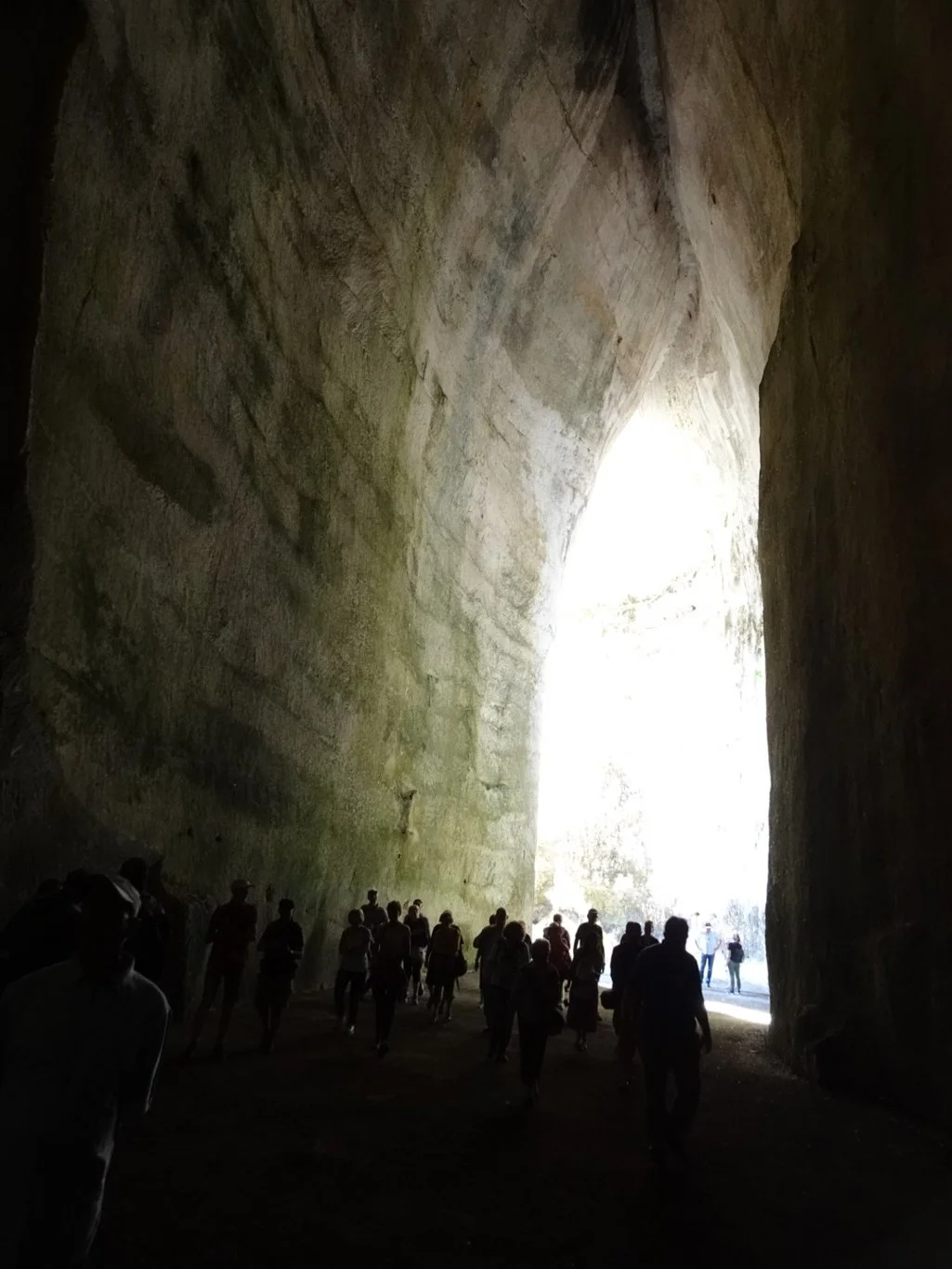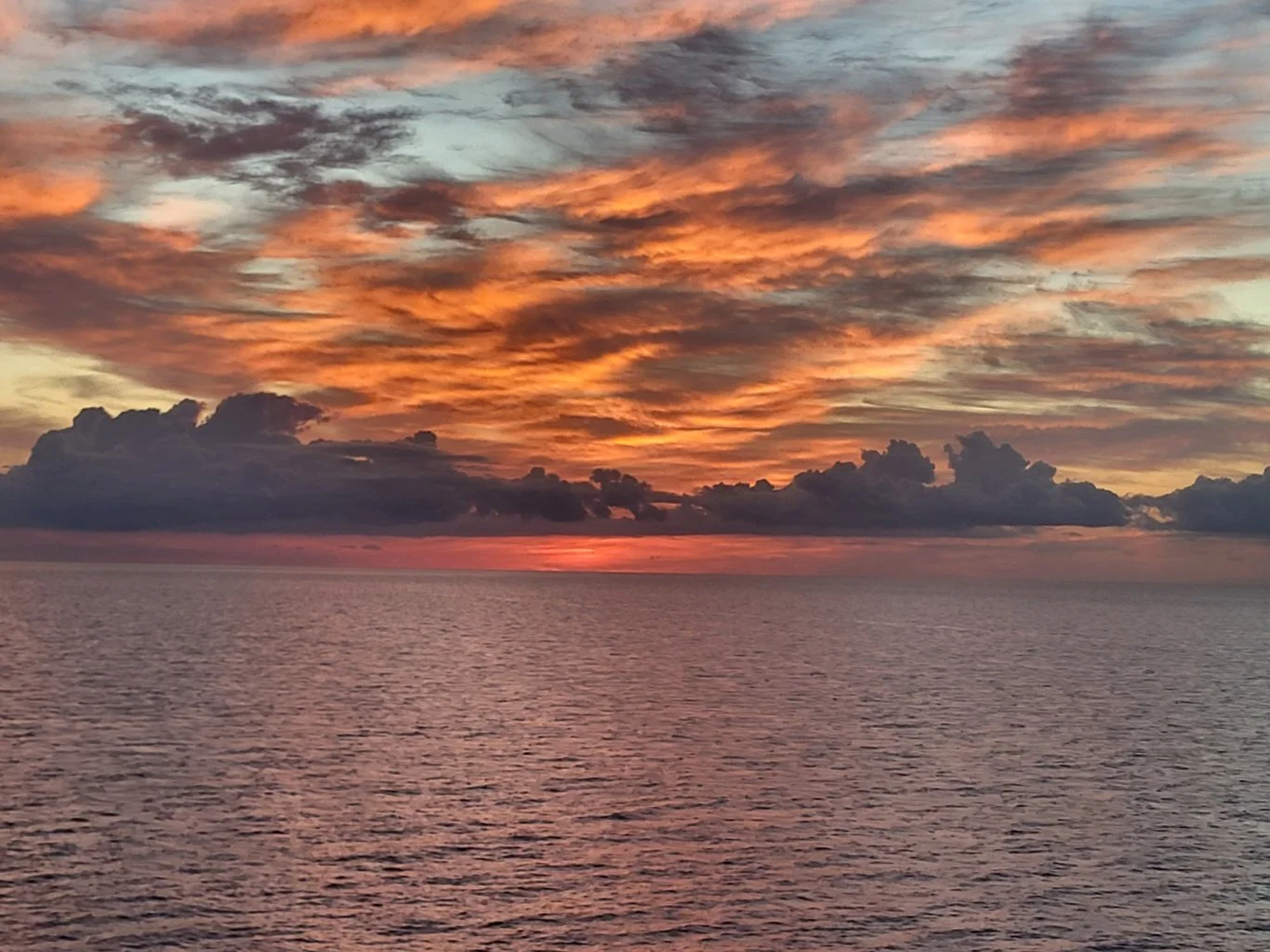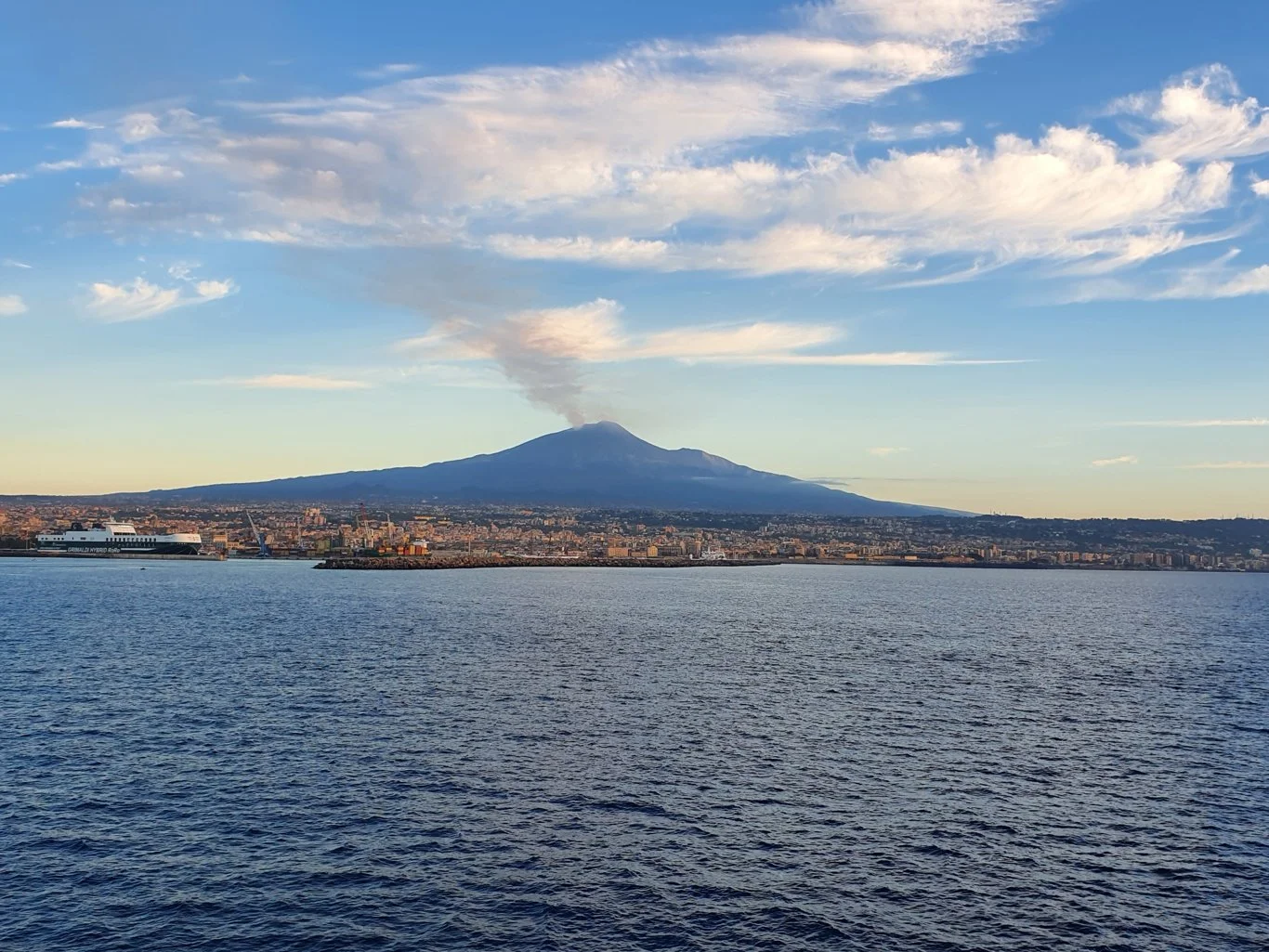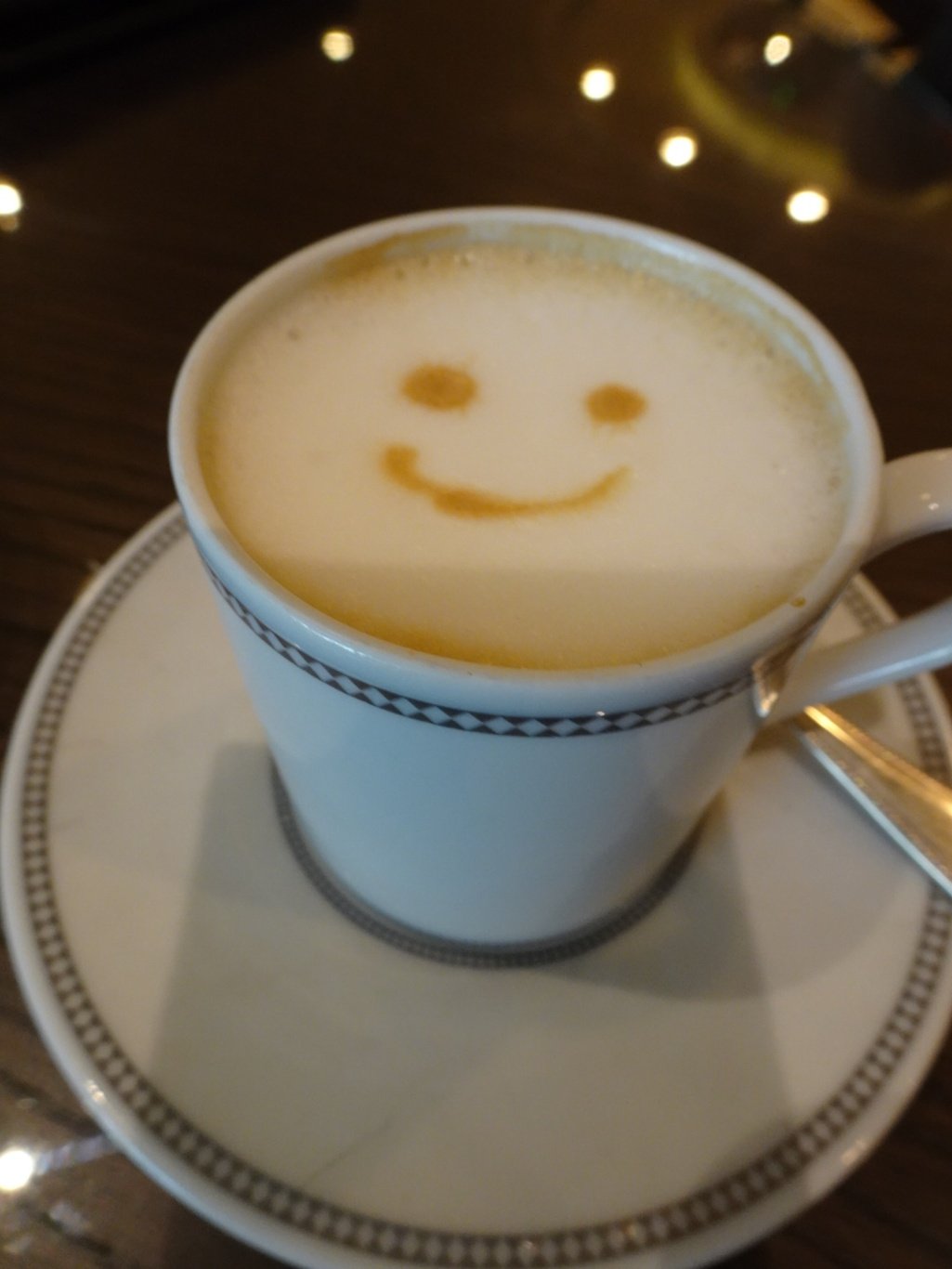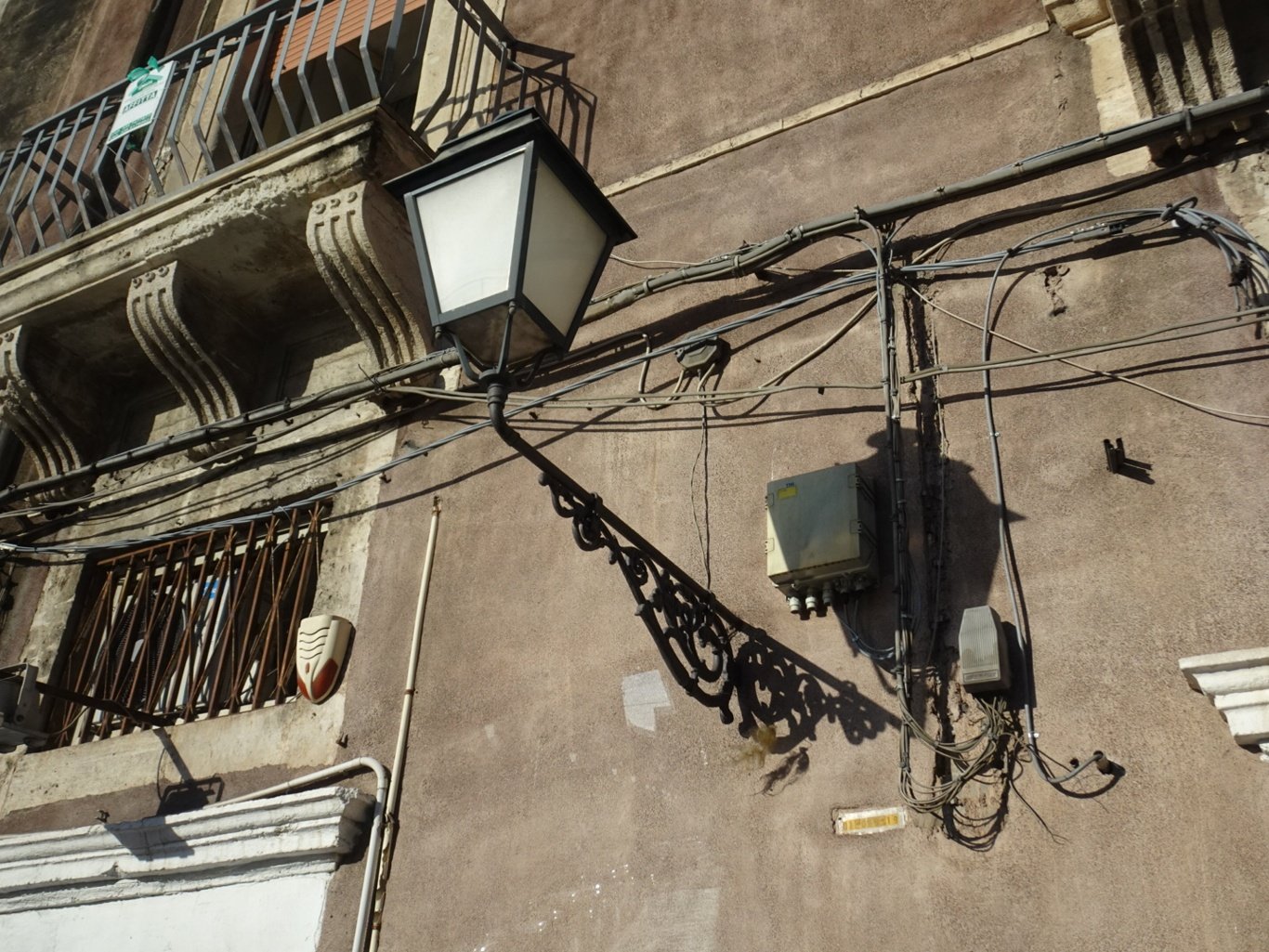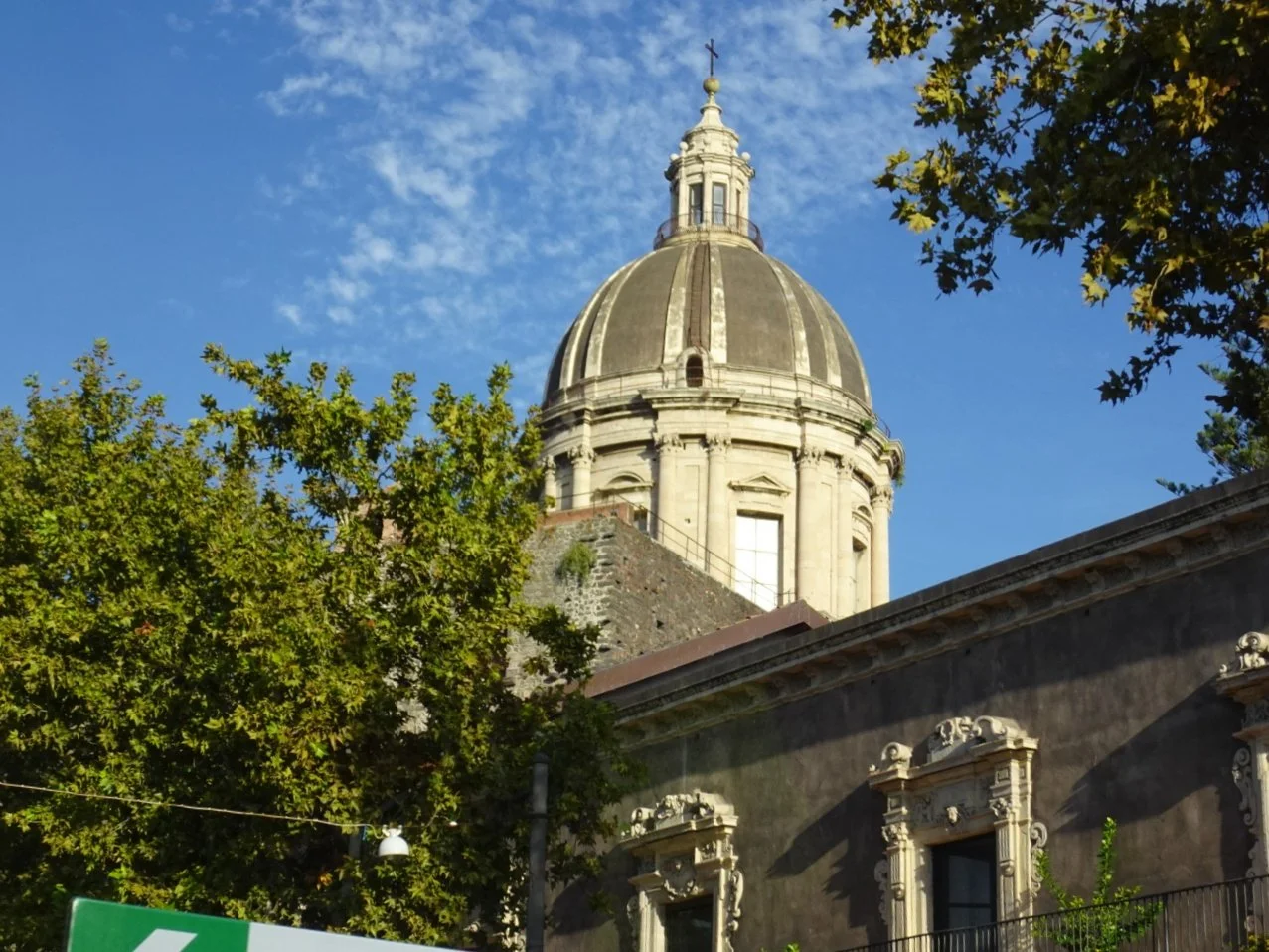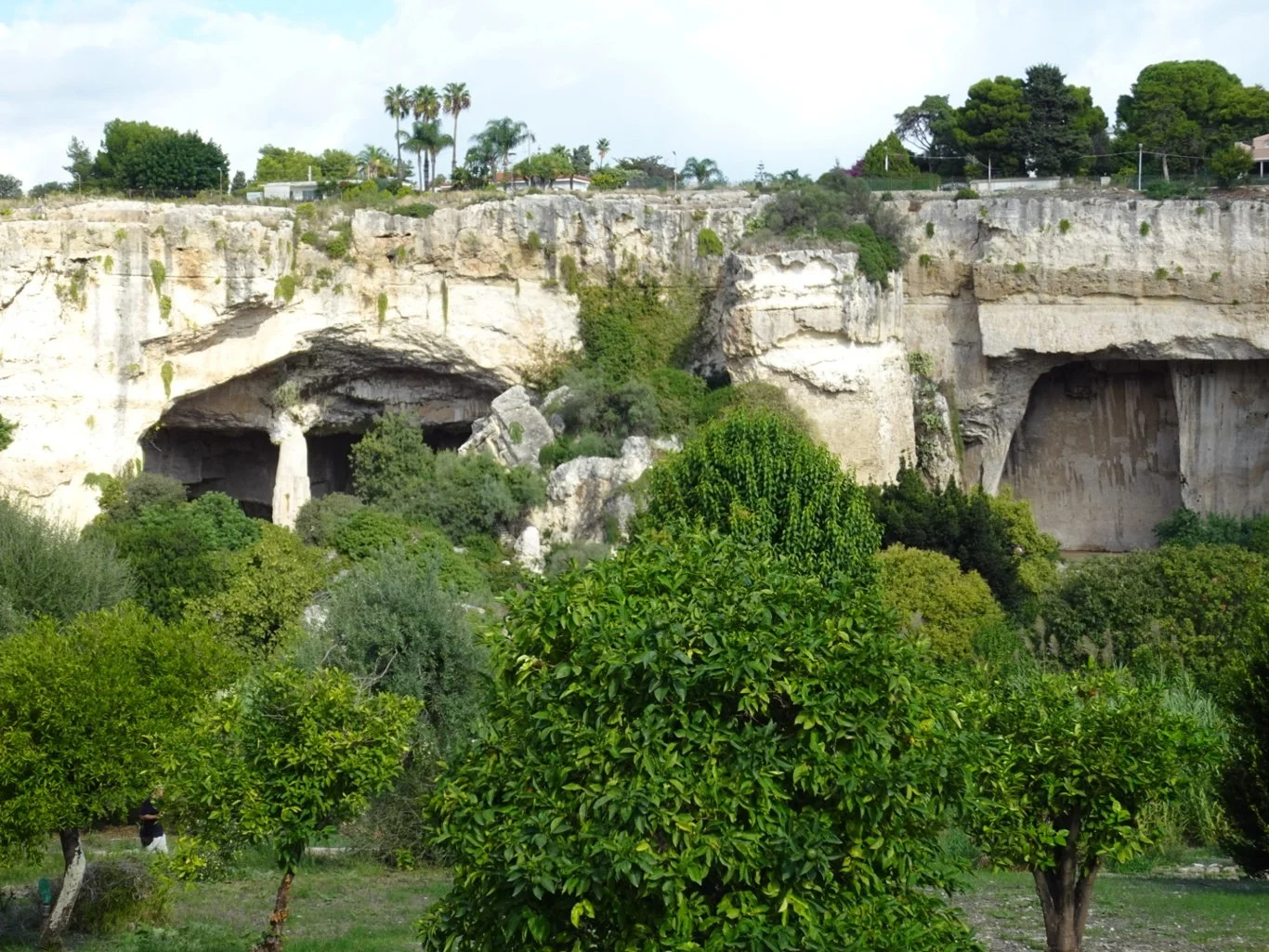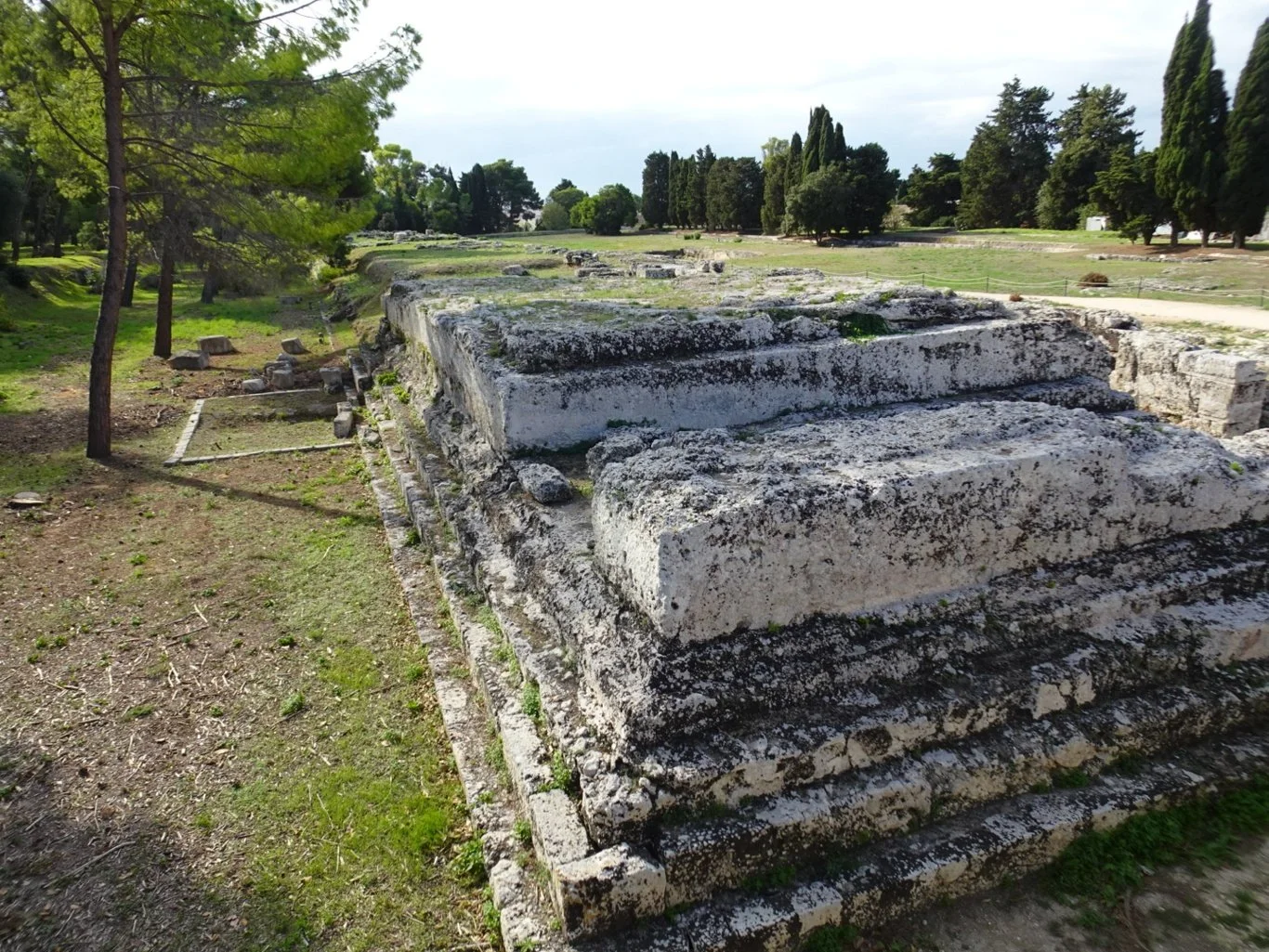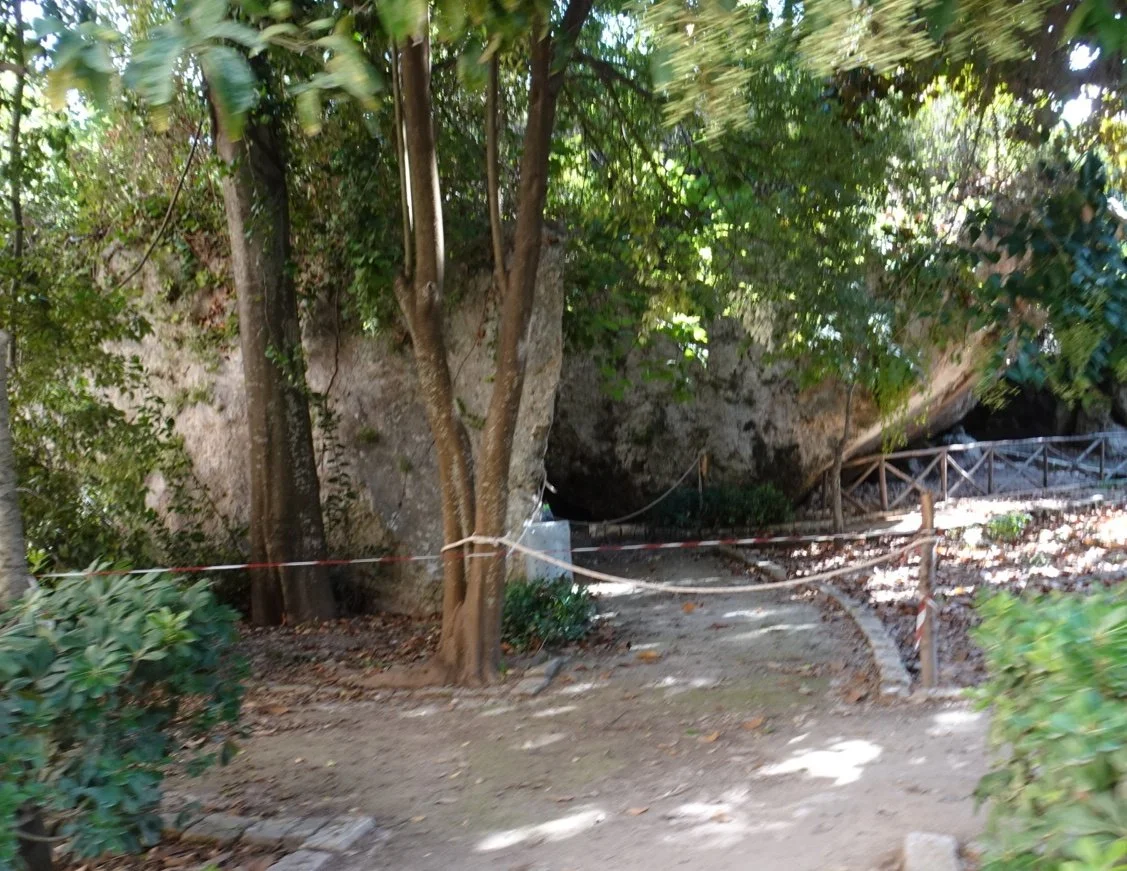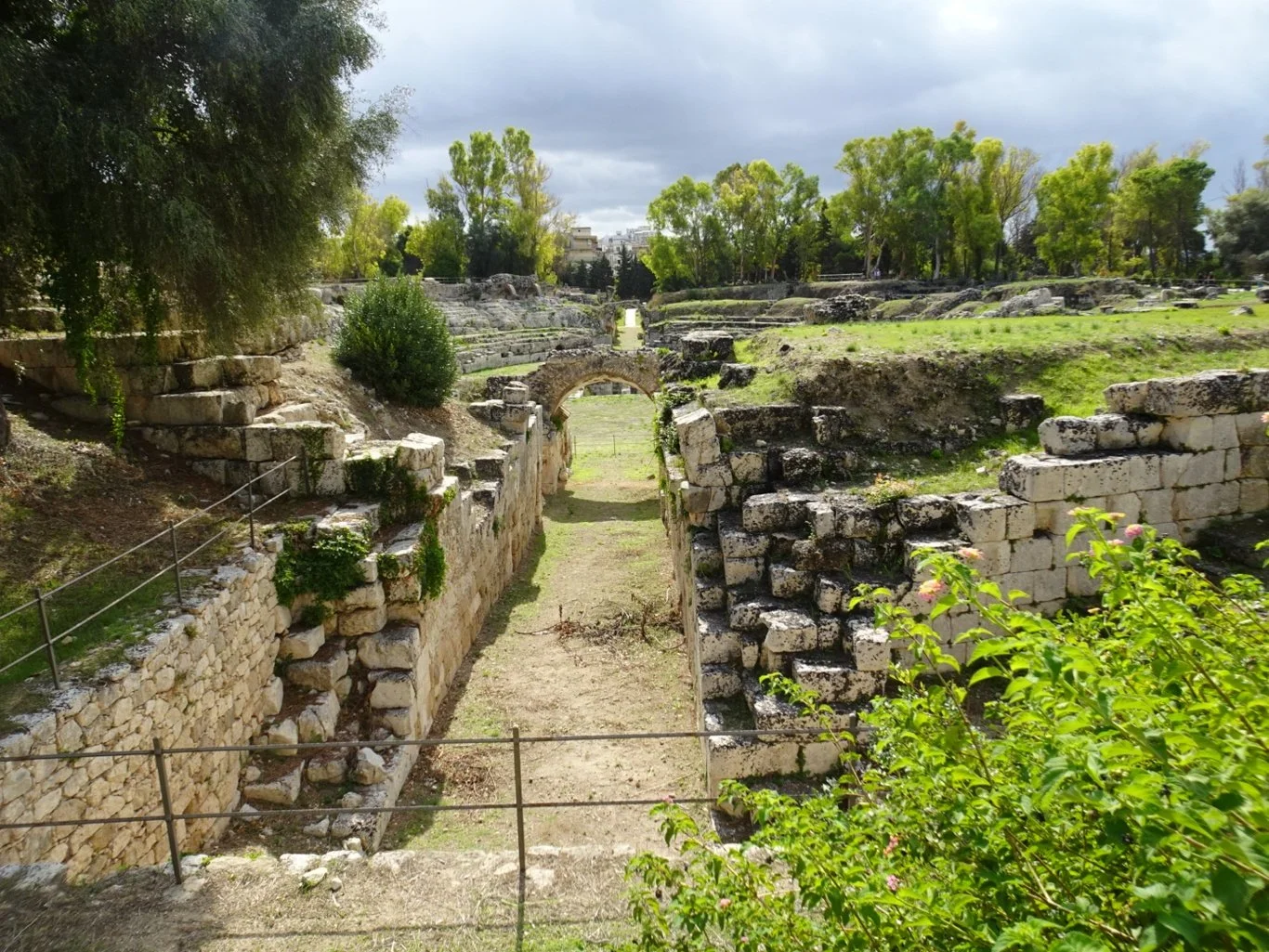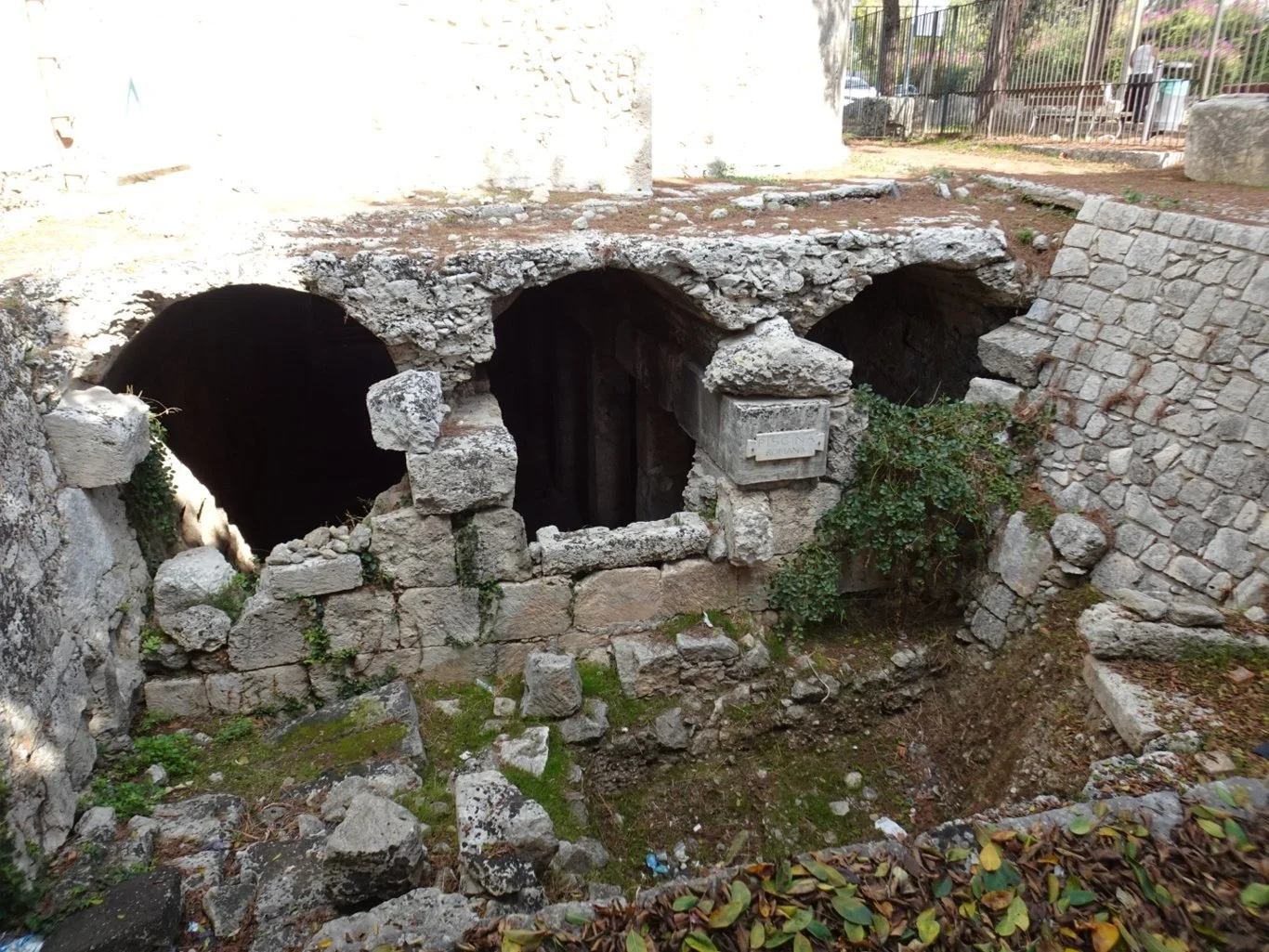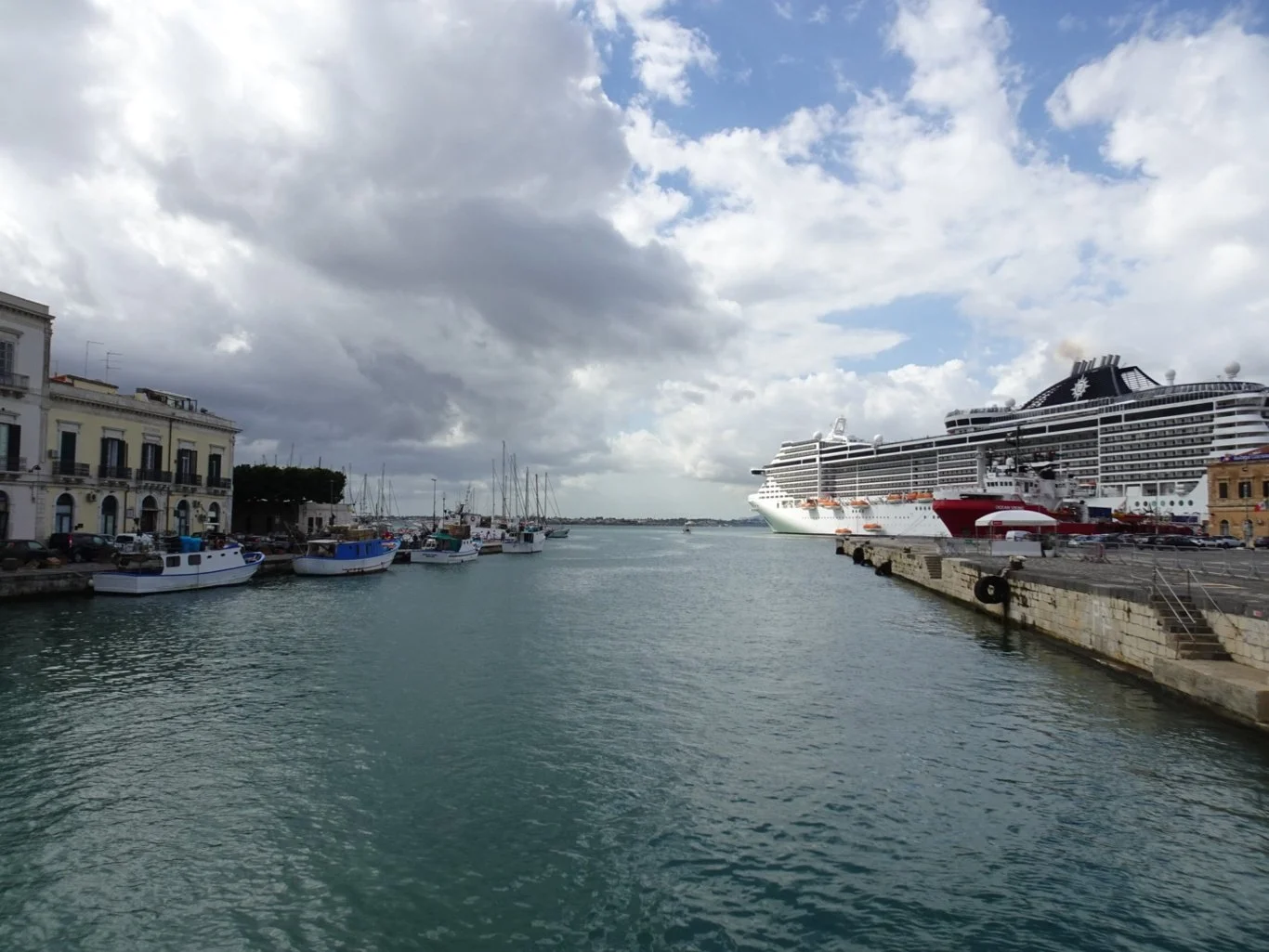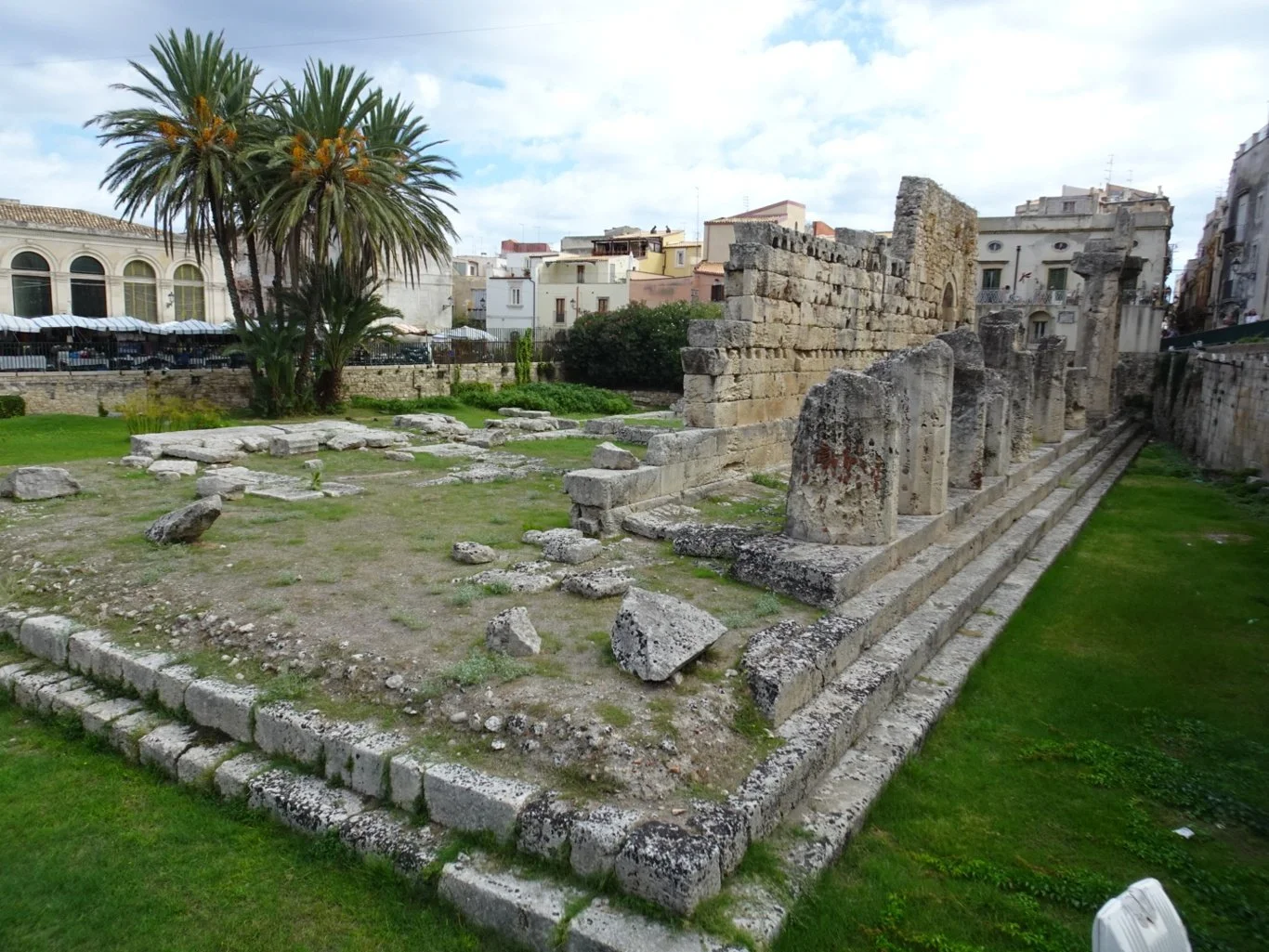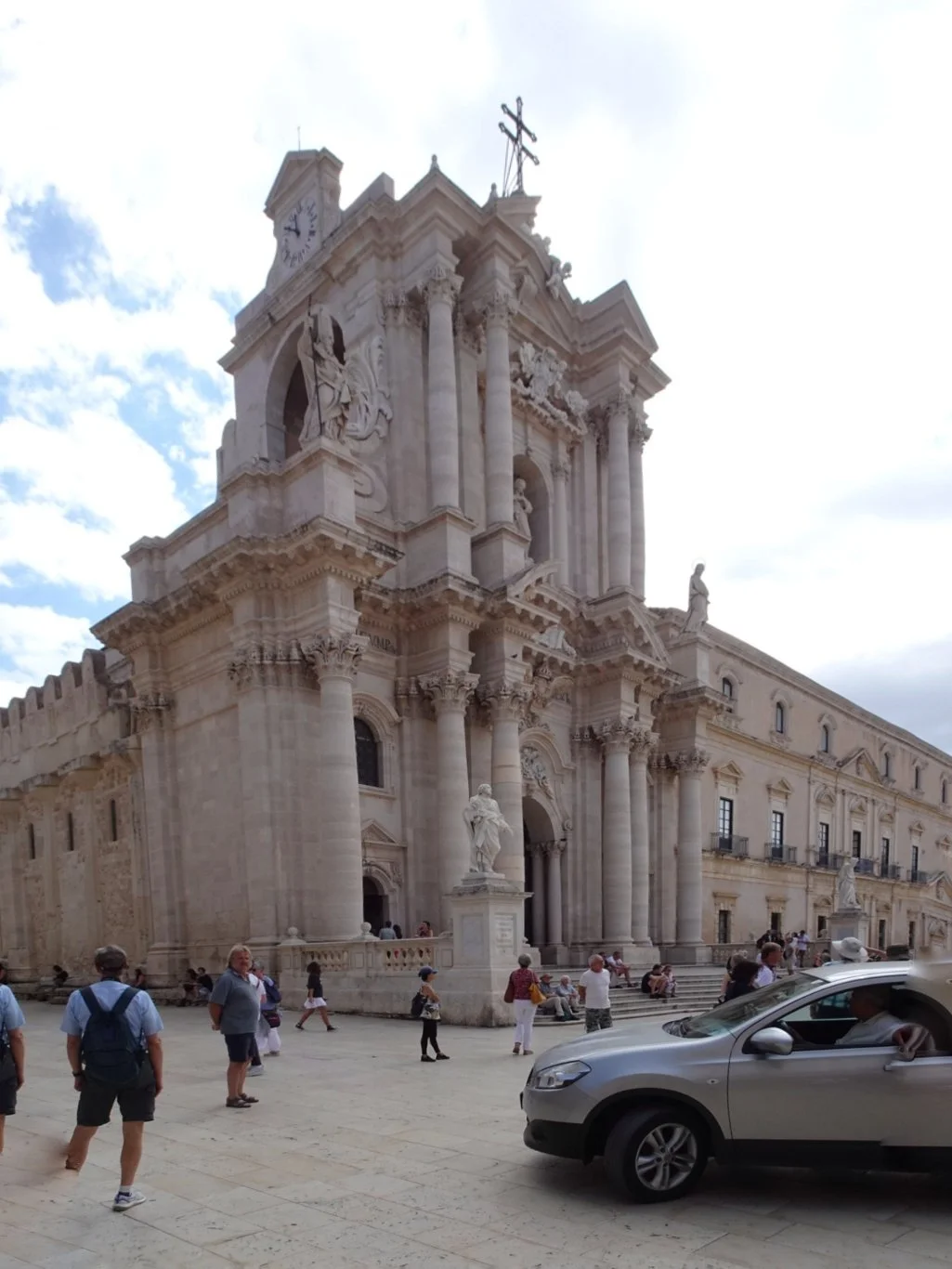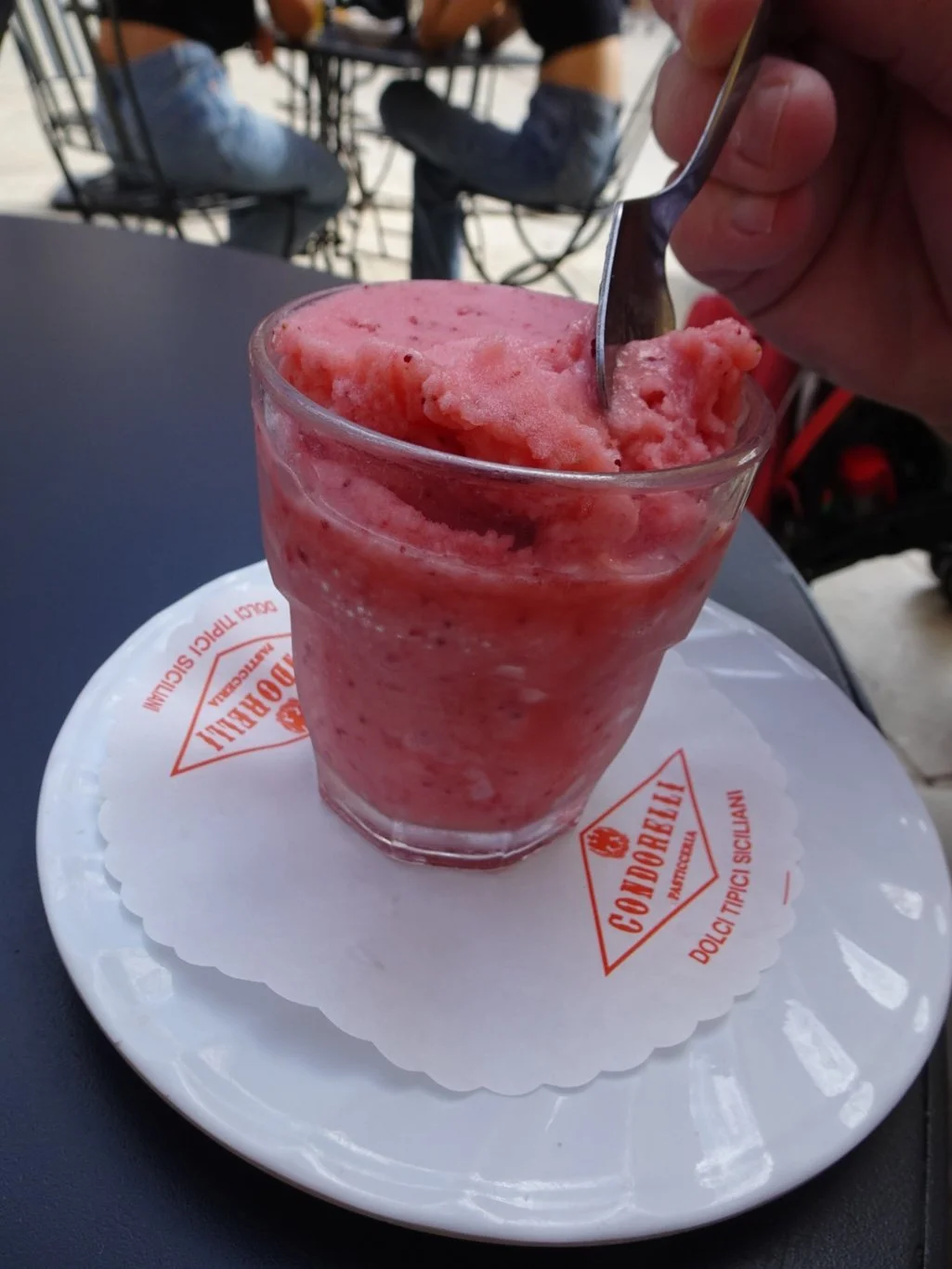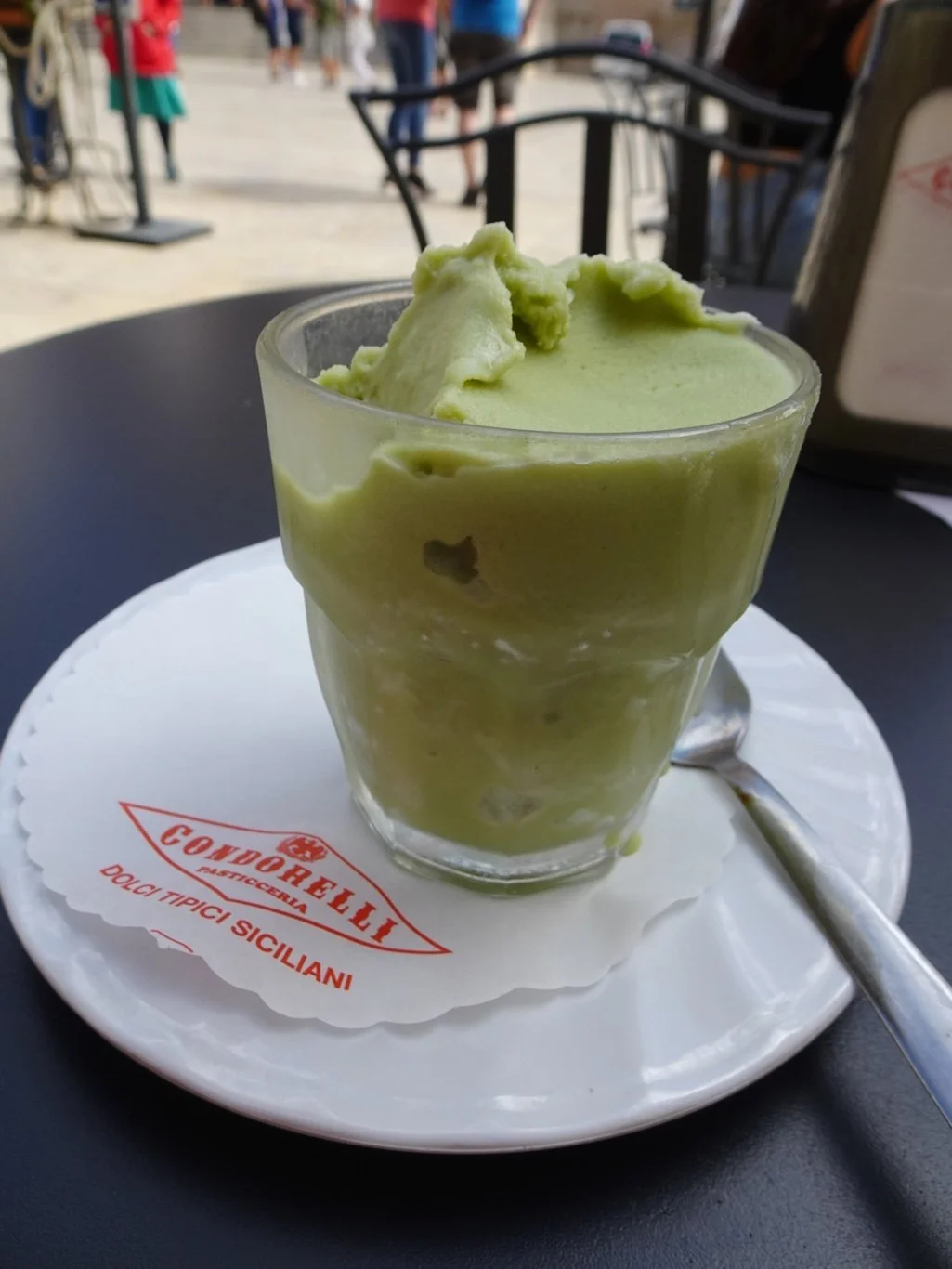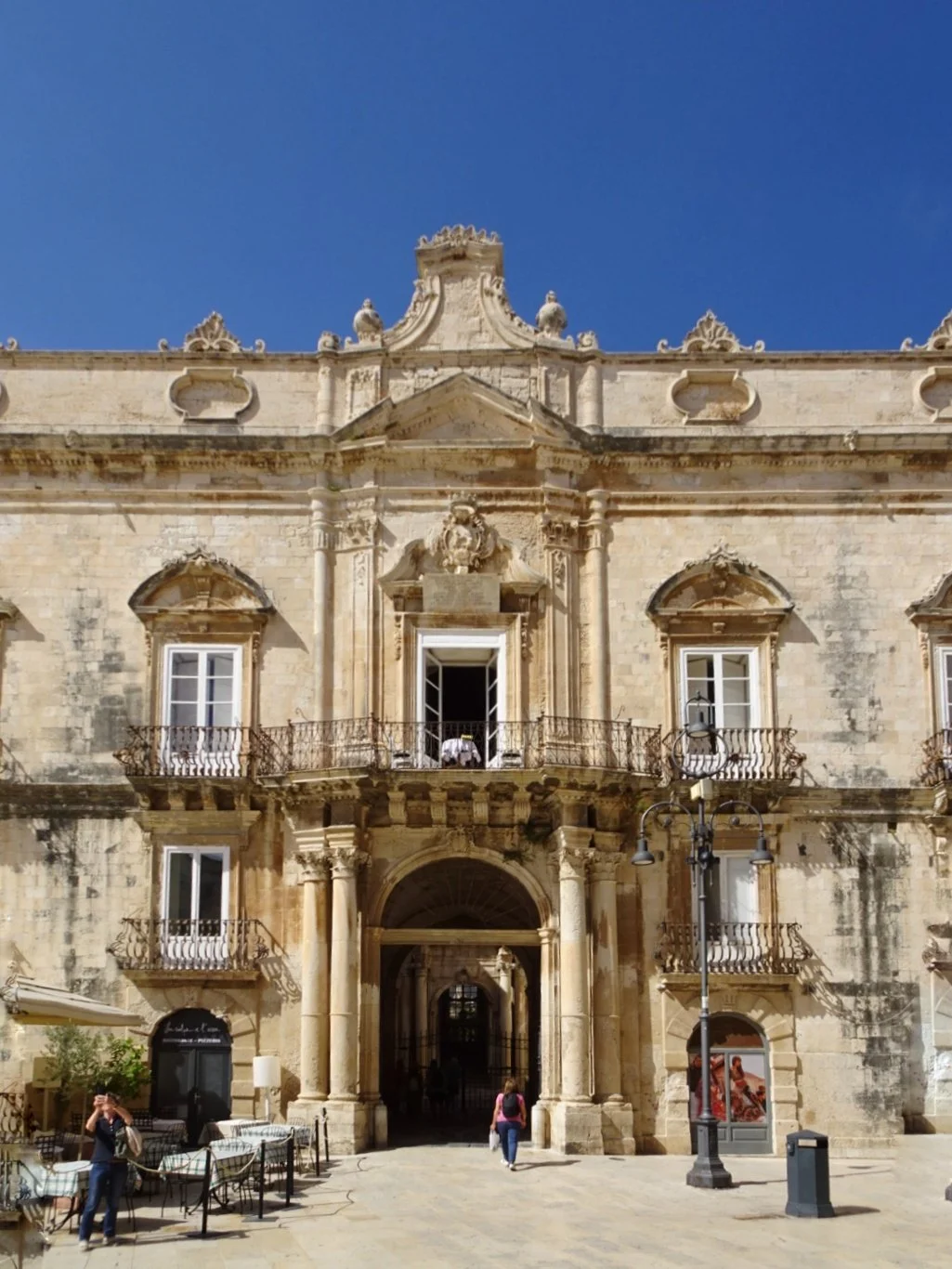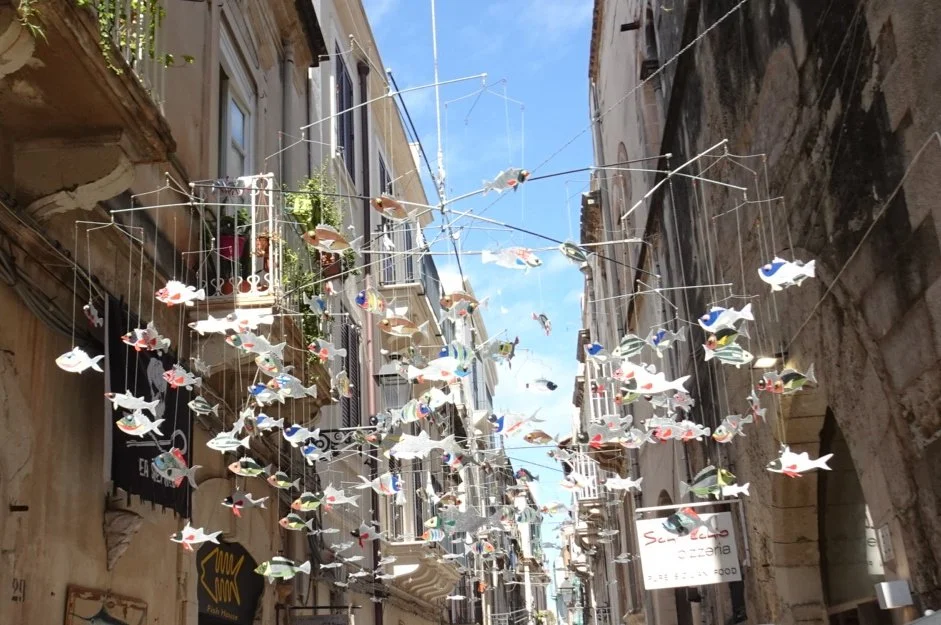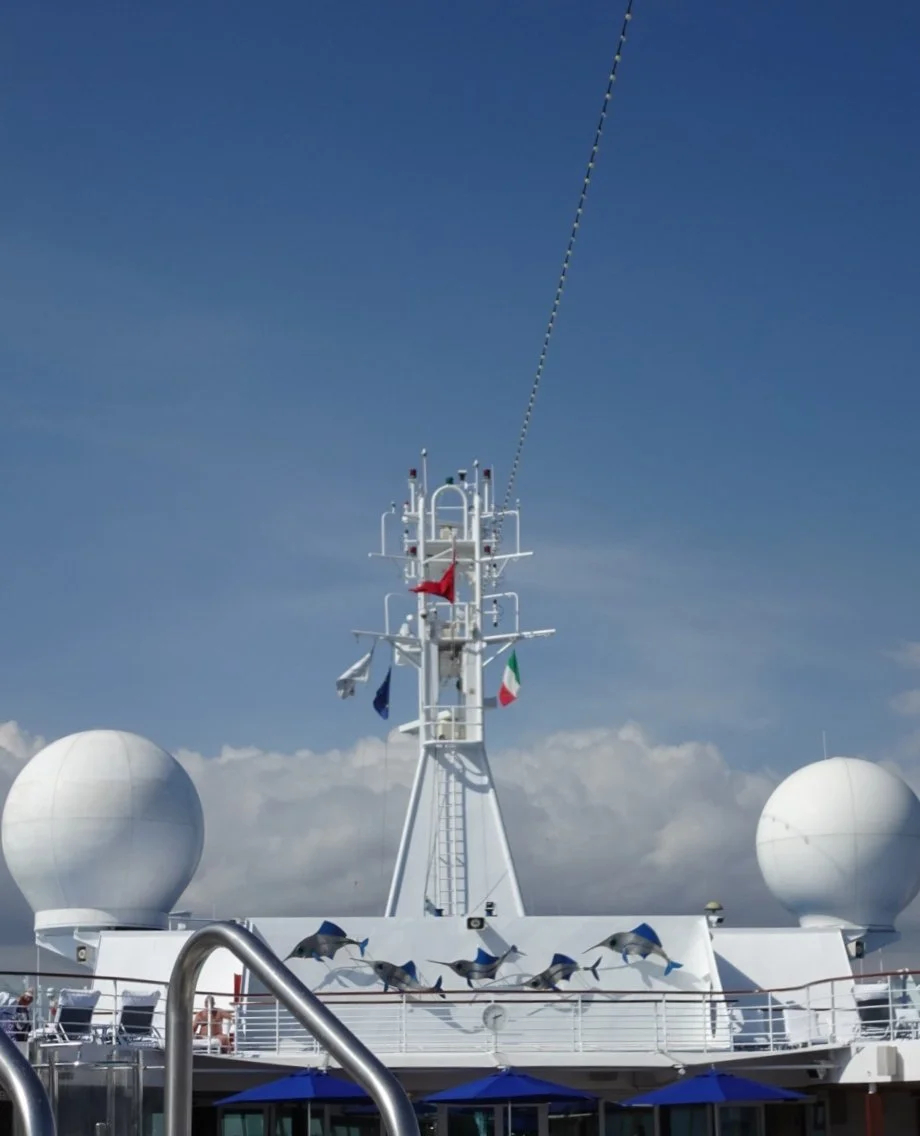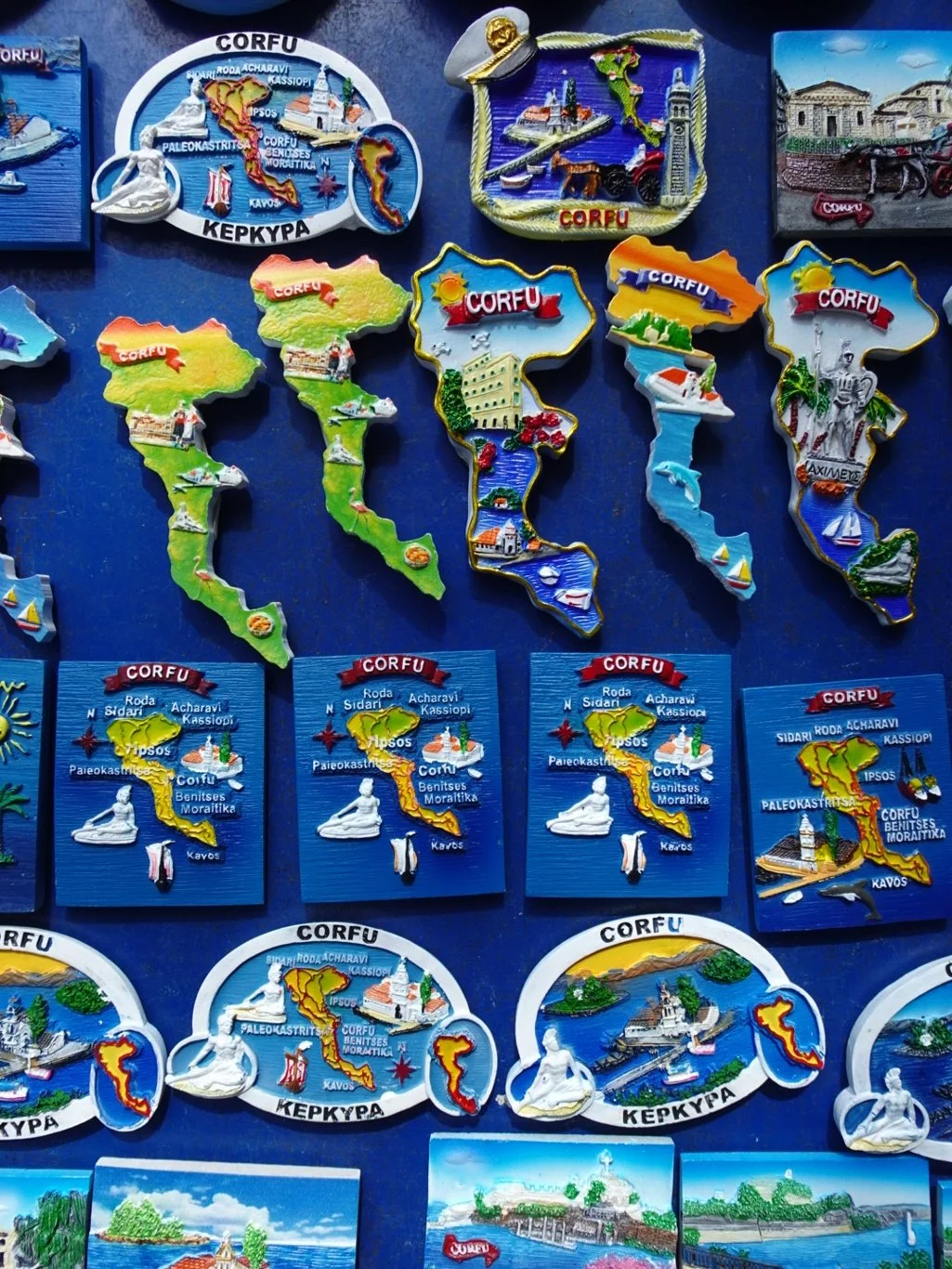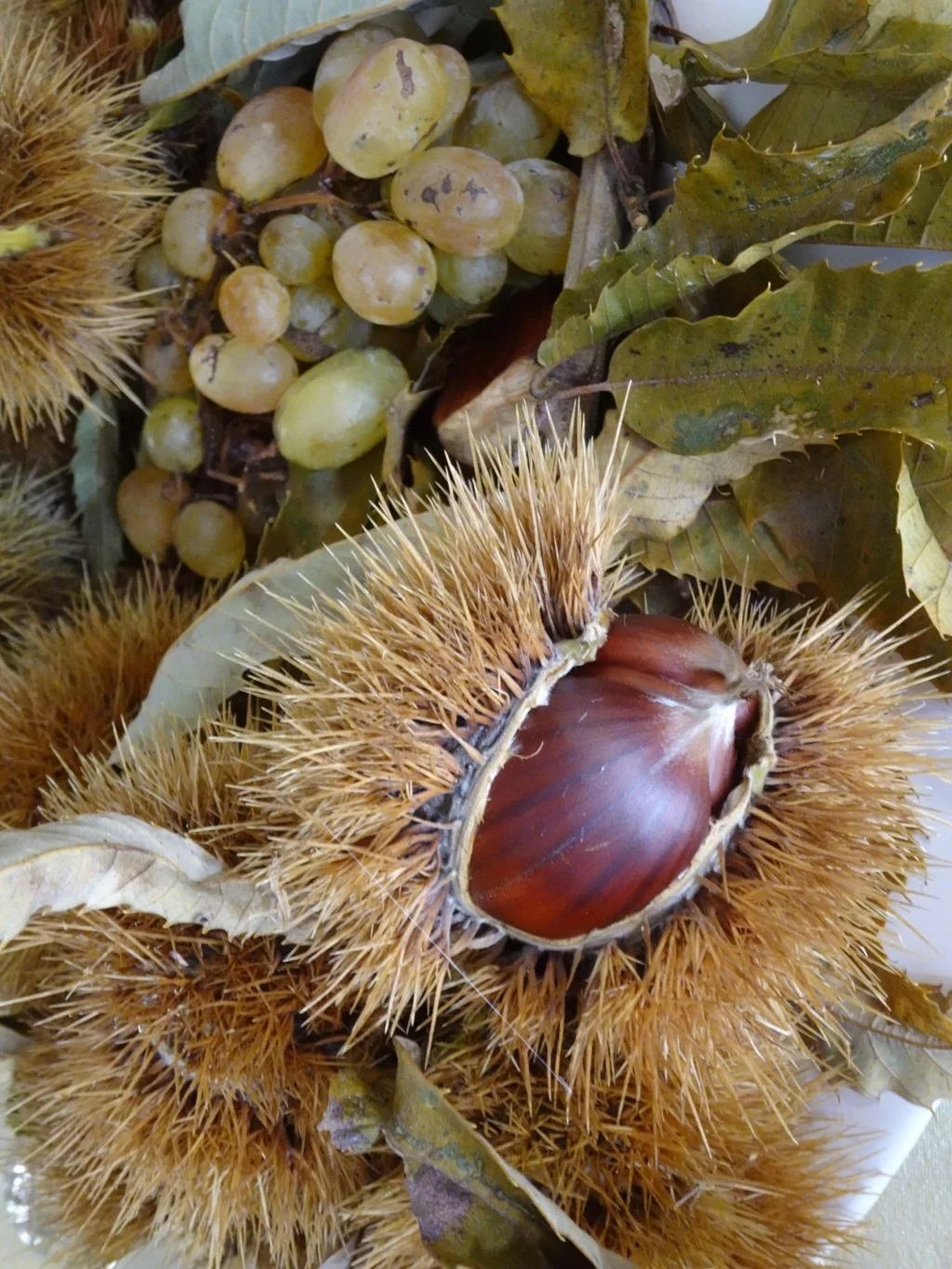Sketches of Syracuse
Those mornings when I wake up and open the curtains to a sky like this are magical. What is it about skies at sea?
My Hero was getting the drinks at the coffee shop whilst I tried (again) to post things here, hoping that the internet would be a bit more cooperative this morning. As soon as he saw me, he said “go outside, quickly!” - he’d already taken his photo…by the time I got there to take mine, we’d turned around and there were other dockyard things in the way of my picture. So, kudos to him for getting there in time!
My reward was a special latte macchiato from Justas, served with a twinkle!
The drive from the port to Syracuse didn’t go through the prettiest bits of Catania, I suspect.
Though we did catch sight of the cathedral as we made our way through the traffic.
Finally reaching our destination about an hour later. We’d driven through the Catania Plain, a flat area known for growing oranges and wheat, then into the limestone hills that rose out of the plain towards Syracuse.
It was these limestone hills which made us feel just like at home. The first part of the Syracuse archaeological site was a pathway along the side of a former quarry, where stone had been taken leaving pillars supporting the roof of a cave or two. This is so uncannily like our garden landscape at home - on a larger scale of course! - we couldn’t help but make comparisons.
One huge feature of this part of the park was an enormous altar, where thousands of bulls would have been sacrificed in celebration of the winning of a battle or other triumphal festival. Elena, our guide, did her best to paint the picture for us so we could imagine the scene, but to be honest, it all sounded so gory that we agreed, we’d rather not!
So we moved on. We were a group of around twenty today, a good size to stick together and to hear what Elena had to tell us. The next stage was the cave area.
Firstly, this cave, known as the Ropemakers cave, because the atmosphere in this area was ideal for the process of treating the fibres and making ropes. It was used until the 1980s I believe - for now, I was too taken with the reflections on the stone walls from the water in the pool below.
I loved the ripples and the colours that kept appearing but couldn’t work out if those were in the stone or in the reflection.
Next, we went around the corner to the cave known as Dionysius Ear.
This was an S shaped cave, incredibly high and rather deep, where the sound echoed around in a noticeably “different” way. It is said that Dionysius would sit in here listening to the conversations of prisoners held captive in caves nearby. Standing in there, it was easy to imagine that to be the case.
A further walk uphill for a while led us to the Greek Theatre, where Elena explained the difference between the Roman and the Greek designs. Here’ we had the semicircular Greek theatre with an orchestra, a stage and a scena - built into the hillside, because the Greek’s didn’t know how to build such a structure on a level surface.
The Roman amphitheatre was just a little further along, fully circular in shape (or rather, in this case, elliptical), built on a level site thanks to their knowledge and ability to construct an arch. All obvious when it’s pointed out like that!
Finally, a glimpse of the Roman swimming baths as we made our way to the car park again. Weary feet, every one of them!
It was a short drive from the site to the old town of Syracuse, Ortigia. As we drove, we noticed a large white ship on the horizon and as our driver parked the bus, we found ourselves right there in front of it. The MSC Splendida. Wow.
The first landmark as we crossed the bridge into the old town was the statue of a famous mathematician and natice of Syracuse. We took a few guesses to his identity before Elena gave the answer: Archimedes.
Our walk around the old town of Ortigia began at the Temple of Apollo, where the architecture was explained well by Elena and even though her group were slowly beginning to flag a bit.
We soldiered on down through the narrow streets, through the crowds of people and at times, trying to find the supply of energy that by now was getting perilously low.
At last, we made it to our goal, the cathedral square, where the beauty and open space proved to be the lift we needed. The Baroque/Rococo style here was in contrast to the architecture we’d seen elsewhere and it felt good to simply stand and stare for a while.
But it felt even better to sit and enjoy a local speciality: granite, in a cafe there in the square.
My Hero had strawberry and I chose my favourite pistachio. It was delicious and hit the spot!!
We met up again in the most spectacular setting, outside the baroque town hall.
Of course, we had to walk all the way back again, to the car park where our bus was parked. It was a daunting thought but made easier by fun flying fishes and interesting conversation.
An hour later, we were back on board ship, sitting in the sunshine with a beer and the best of company.
Life is good!
(And I discovered the best place on the ship to ensure reliable wifi that doesn’t keep falling over…and no, I’m not telling!!)







